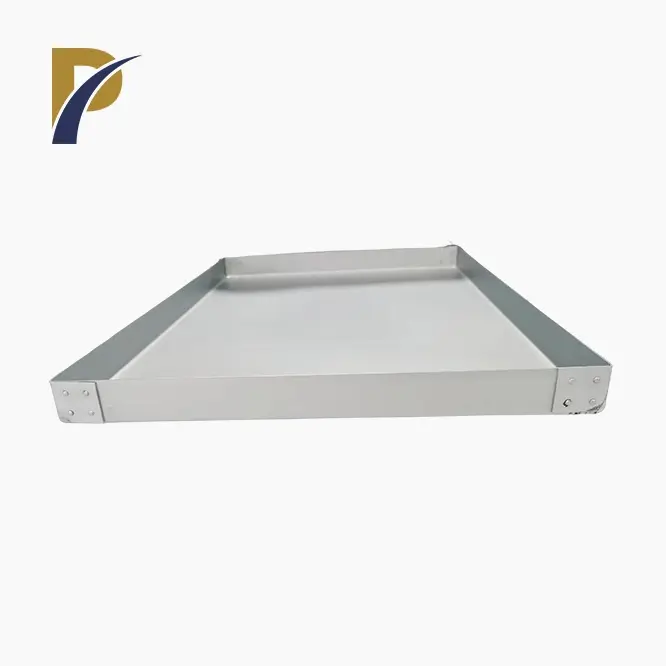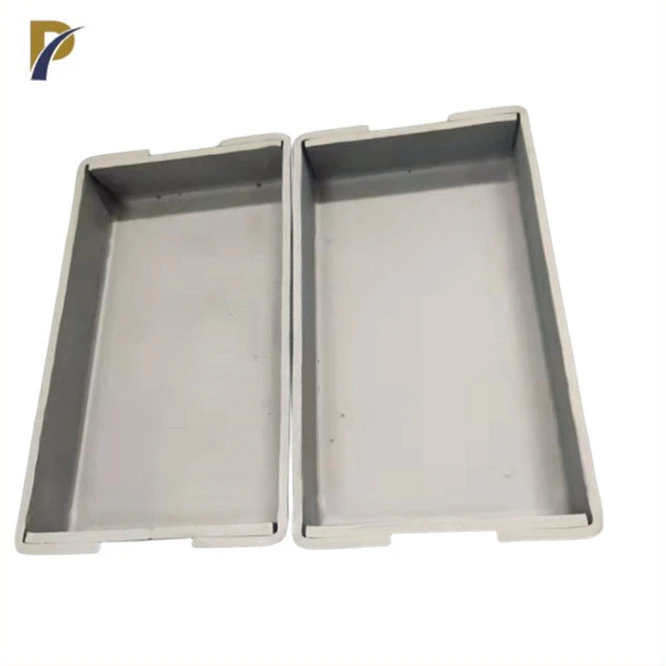Manufacturing Process and Properties of Stretched Molybdenum Boats
Raw Material Selection and Preparation
The travel of a stretched molybdenum boat starts with the cautious determination of high-purity molybdenum sheets. These sheets are fastidiously assessed for pollutions and auxiliary keenness, guaranteeing as it were the finest quality fabric is utilized. The molybdenum experiences a thorough cleaning prepare to expel any surface contaminants that might possibly influence the last product's execution. This introductory planning is vital in keeping up the extraordinary immaculateness levels required for touchy applications in the semiconductor industry.
Stretching Technique and Its Impact
The heart of the manufacturing process lies in the stretching technique. Using specialized equipment, the molybdenum sheets are subjected to controlled tension at elevated temperatures. This process, known as hot stretching, realigns the metal's crystalline structure, creating a more uniform and densely packed grain arrangement. The result is a molybdenum sheet with significantly enhanced mechanical properties, including improved tensile strength and resistance to creep. The stretching process also contributes to the boat's ability to maintain its shape under extreme thermal conditions, a critical factor in its functionality.
Finishing and Quality Control
After stretching, the molybdenum sheets undergo precise cutting and forming to create the boat shape. Advanced machining techniques ensure exact dimensions and smooth surfaces, crucial for preventing material contamination during use. Each boat then passes through a series of quality control checks, including surface analysis, strength testing, and chemical composition verification. This rigorous inspection process guarantees that every stretched molybdenum boat meets the exacting standards required for high-performance applications in demanding industrial environments.
 |
 |
Applications and Advantages of Stretched Molybdenum Boats
Semiconductor Manufacturing
In the realm of semiconductor production, stretched molybdenum boats play a pivotal role. They serve as carriers for silicon wafers during high-temperature processes such as chemical vapor deposition (CVD) and physical vapor deposition (PVD). The boats' exceptional thermal stability ensures uniform heat distribution across the wafers, crucial for achieving consistent film deposition. Their resistance to warping at elevated temperatures maintains the precise positioning of wafers, contributing to higher yield rates and improved product quality in chip manufacturing.
LED and OLED Production
The production of light-emitting diodes (LEDs) and organic light-emitting diodes (OLEDs) heavily relies on stretched molybdenum boats. These boats are used in the evaporation and deposition of various materials that form the active layers of these devices. The molybdenum's low reactivity and minimal outgassing properties prevent contamination of the delicate organic compounds used in OLED fabrication. This ensures the purity and integrity of the deposited layers, directly impacting the efficiency and lifespan of the final LED and OLED products.
High-Temperature Metallurgy
Beyond electronics, stretched molybdenum boats find applications in high-temperature metallurgical processes. They are utilized in sintering operations for refractory metals and ceramics, where their ability to withstand extreme temperatures without degradation is invaluable. In powder metallurgy, these boats serve as reliable containers for metal powders during heat treatment and alloying processes. Their dimensional stability at high temperatures ensures precise control over the sintering environment, leading to consistent and high-quality metal components.
Maintenance and Longevity of Stretched Molybdenum Boats
Proper Handling and Storage
To maximize the life expectancy of stretched molybdenum boats, legitimate dealing with and capacity are basic. These components ought to be put away in a clean, dry environment to avoid surface oxidation. When not in utilize, they ought to be kept in fixed holders with desiccants to retain any dampness. Dealing with ought to be done with clean, lint-free gloves to maintain a strategic distance from presenting contaminants. It's pivotal to maintain a strategic distance from mechanical push or impacts that seem compromise the boat's basic keenness, as indeed minor distortions can influence its execution in high-precision applications.
Cleaning and Reconditioning
Regular cleaning and reconditioning of stretched molybdenum boats are vital for maintaining their performance. After each use, boats should be thoroughly cleaned to remove any residual materials. This can be done using ultrasonic cleaning in appropriate solvents, followed by high-purity water rinses. For more stubborn deposits, gentle mechanical cleaning with non-abrasive materials may be necessary. Periodic heat treatment in a vacuum or inert atmosphere can help restore the molybdenum's surface properties and remove any absorbed gases, ensuring continued high performance in subsequent operations.
Monitoring and Replacement
Nonstop checking of stretched molybdenum boats is pivotal for keeping up handle quality. Customary reviews ought to be conducted to check for signs of wear, such as surface setting, discoloration, or misshapening. Progressed procedures like X-ray diffraction can be utilized to survey changes in the molybdenum's crystalline structure over time. When vessels appear signs of critical corruption or no longer meet execution determinations, they ought to be instantly supplanted. Executing a proactive substitution plan based on utilization cycles and working conditions can anticipate unforeseen disappointments and keep up reliable generation quality.
Conclusion
Stretched molybdenum boats represent a pinnacle of materials engineering in high-temperature industrial applications. Their unique manufacturing process imbues them with exceptional properties, making them indispensable in semiconductor, LED, and metallurgical processes. By providing a stable, contamination-free environment for critical high-temperature operations, these boats contribute significantly to the quality and efficiency of advanced manufacturing processes. As technology continues to advance, the role of stretched molybdenum boats in enabling cutting-edge production techniques remains crucial, underscoring their importance in the ongoing evolution of industrial capabilities.
Contact Us
For more data around our high-quality stretched molybdenum boats and how they can improve your generation forms, if you don't mind do not falter to contact us. Our group of specialists is prepared to help you in finding the culminate arrangement for your particular needs. Reach out to us at info@peakrisemetal.com to discover how Shaanxi Peakrise Metal Co., Ltd. can support your industrial innovations with our superior molybdenum products.
